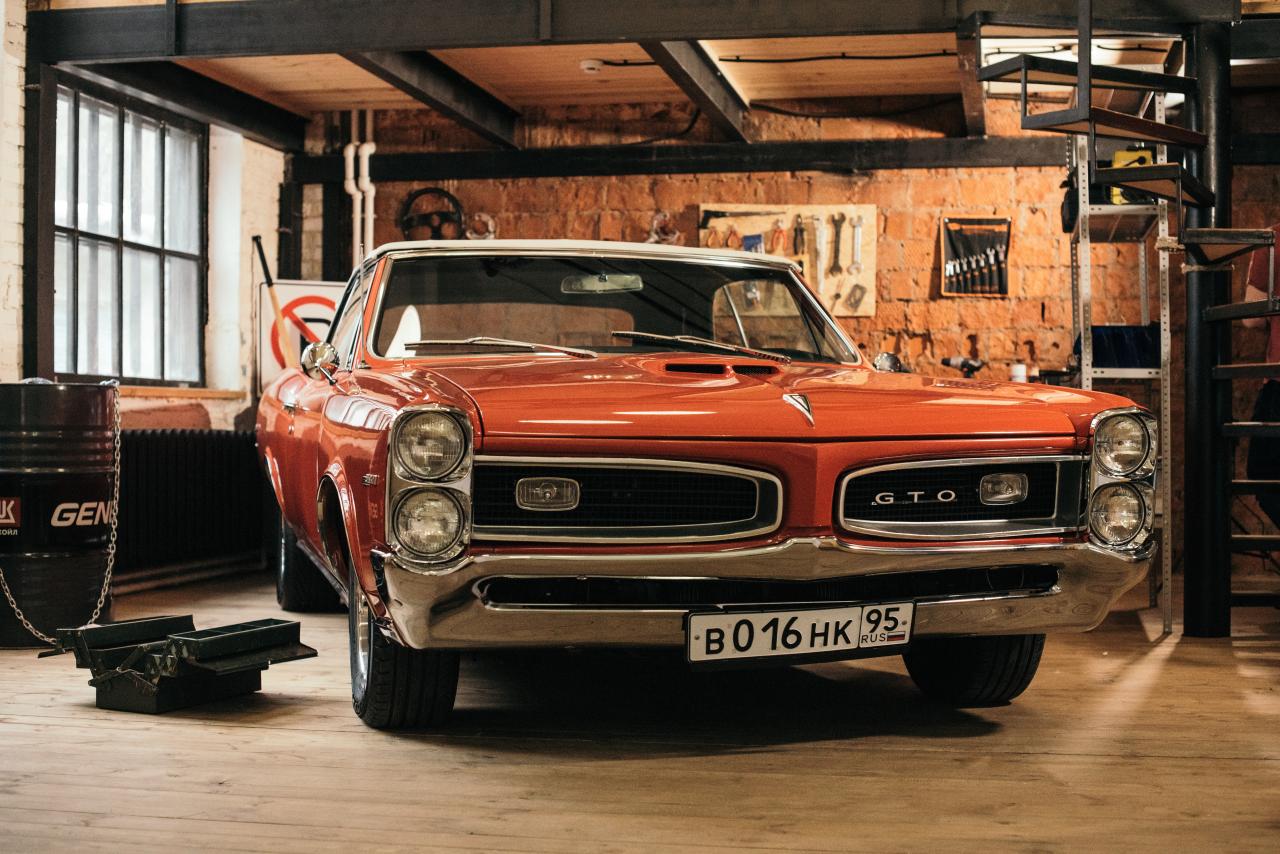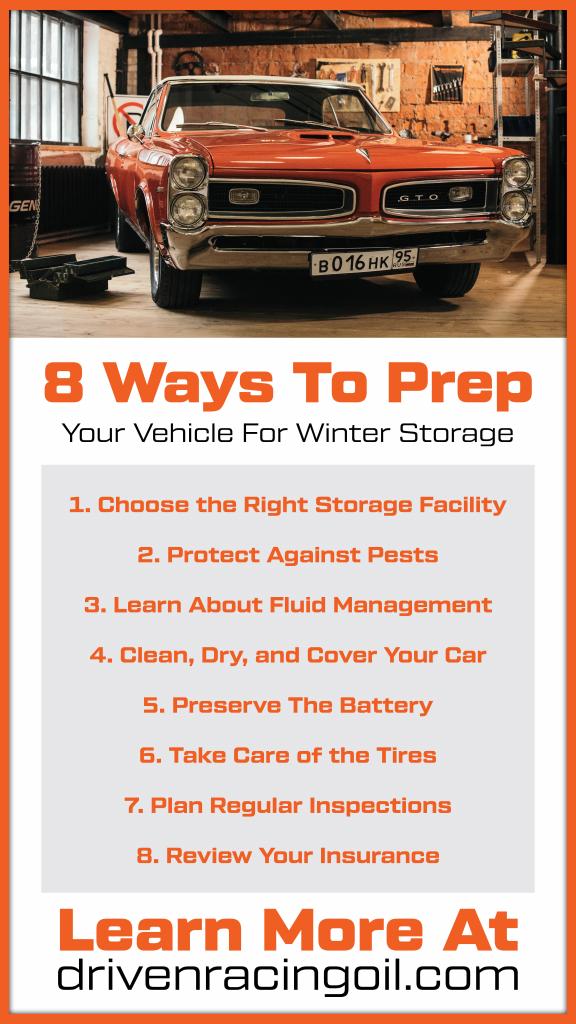How To Prepare Your Vehicle for Winter Storage

How to Prepare Your Vehicle for Winter Storage
As the bitterly cold winter months approach, it’s time to start thinking about how to prepare your race car or classic vehicle for winter storage. Just as elite athletes require specialized care during the off-season, your vehicle demands similar levels of attention and protection.
This guide is specifically designed for people who need assistance in learning how to provide extra care in maintaining their vehicles during winter storage. With these tips, you can ensure your vehicle comes out of hibernation in peak condition and ready to hit the track when spring begins.
Choose the Right Storage Facility
The preparation process starts by finding the best place possible to store your vehicle during the off-season. When selecting the ideal storage facility, you should start by finding a place with a climate-controlled environment that’ll protect your vehicle from harsh temperature fluctuations, icy conditions, and excessive humidity. Additionally, the facility should provide pest control measures, as rodents and insects can cause significant damage to crucial components such as wiring and upholstery.
It is possible to store a vehicle yourself, but you’ll want to make sure you have all the amenities that a proper storage facility would have. Since this can be quite costly, paying a facility is usually cheaper, but it is possible to outfit your own garage with the appropriate amenities.
Protect Against Pests
While a good facility will have protections in place to keep rodents and insects out, it’s never a bad idea to take extra steps to safeguard your vehicle. To protect your vehicle against these pests, start by placing mothballs around your car, as their strong smell is a natural deterrent.
Another effective strategy is to use ultrasonic repellents which create a sound frequency that rodents can’t tolerate, driving them away from your vehicle. Also, be sure to cover any openings, such as the exhaust pipe and air intake, with steel wool or similar material that rodents can’t chew through.
Learn About Fluid Management
Before storing your car, it is crucial to take care of essential fluids. One of the most important steps is to perform a thorough oil and filter change. This is because used oil contains diluted fuel, moisture, acid and metal contaminants that can potentially corrode the internal components of your engine during storage. Interestingly, metal contaminates and combustion by-products can catalyze (react to form more destructive compounds) while your engine is being stored, so it is always best store your engine with new motor oil.
Oil change best practice would be to run the engine, let the oil get hot and very carefully drain. Be careful of hot engine oil! Wear protective equipment and think safety first! A hot oil change will allow a more complete drain of used oil, moisture and contaminates. Let the oil drain for as long as possible. The goal is to get the maximum amount of used oil out before replacing the filter and adding new oil. Once you add the new oil, make sure to run the vehicle to circulate the oil through the engine allowing the additives to get to all the critical parts that need to be protected.
By replacing the oil and filter, you ensure that your engine remains protected during storage. Just make sure you use a high-performance Motor oil formulated for storage purposes. The Driven HR series motor oils are all fortified with additional levels of rust and corrosion inhibitors that help protect engines from the acids and moisture that can accumulate during storage.
Additionally, filling the fuel tank to the highest level possible with high-quality gasoline is recommended before storing the car. This will help prevent moisture from accumulating inside the tank. Filling the tank to the highest level possible reduces the amount of air space between the fuel level and the top of the tank. By reducing air space in the tank, you are reducing the amount of moisture that can coalesce into free water with temperature changes. To further safeguard the fuel system, use Driven Injector Defender or Carb Defender. This additive will help maintain the integrity of the fuel and prevent any potential damage caused by seasonal storage. Best practice would be to add the Driven Defender 10 oz bottle to half a tank of fuel. Then fill tank to highest level allowing the additive to mix. Run the engine to allow the treated fuel to pass through all the fuel lines and fuel system components providing protection.
Clean, Dry and Cover Your Car
One thing that many people overlook is the importance of cleaning their vehicle thoroughly before preparing it for winter storage. A clean car will prevent mildew and mold growth on the interior and exterior. Make sure your car is completely dry afterward since moisture can also cause these issues.
If you decide to cover it for extra protection, make sure the vehicle is completely dry, as trapped moisture can lead to rust and corrosion. Be sure to use a high-quality car cover designed for indoor storage to minimize dust accumulation and protect the paintwork.
Preserve the Battery
To prolong your battery life during winter storage, either use a battery tender (a smart charger) or remove the battery altogether before storing it. Battery tenders keep the battery in a consistently charged state, preventing it from draining completely.
If you decide to remove the battery, make sure to store it in a cool, dry place and inspect it periodically to maintain an appropriate charge level. Regardless of which option you choose, if done correctly, you won’t need to buy a new battery at the beginning of the next season.
Take Care of the Tires
One of the most significant problems with long-term car storage is that it can seriously damage your tires. If a vehicle sits for too long, it can develop flat spots where the tire contacts the ground. The tires will also slowly lose tire pressure the longer the car sits. To avoid these issues during storage, one effective technique is to slightly overinflate your tires. This helps to maintain their shape and integrity over time. If you decide to use this method, you must routinely check the tire pressure throughout the storage period to ensure proper inflation and optimal tire performance when you’re ready to hit the road again.
A better option is to use tire cradles or jacks to elevate the car, reducing the weight on the tires and minimizing the chances of deformation. If this isn’t a possibility, you can simply remove your quality tires and put on a set you don’t care about, then store your good ones in a temperature-controlled environment.
Plan Regular Inspections
While your race car is in storage, it’s essential to conduct regular inspections at least once a month. During these checks, you’ll be on the lookout for signs of moisture, pest activity or any other potential damage that could affect the vehicle’s performance or condition. After you’ve checked the vehicle over, turn on the car briefly to circulate the fluids and prevent seals from drying out. If you can’t take the vehicle outside to do this, remember to ventilate the storage area properly to avoid the build-up of exhaust fumes.
Review Your Insurance
Even though we’re sure your insurance coverage for your vehicle is great, one thing that not all policies cover is issues developed during storage. While your vehicle is in storage, you must ensure it’s insured against potential risks such as theft, fire or natural disasters. Take the time to consult with your insurance provider regarding any specific requirements or changes in your policy for stored vehicles.
Make sure you also have detailed information about the place you’re storing your vehicle. Providing proof of secure, climate-controlled storage could possibly lower your insurance premiums. It’s advised to keep a record of the car’s condition with dated photographs and detailed descriptions before storage, useful as evidence in case of any insurance claims.


You must login to post comments.